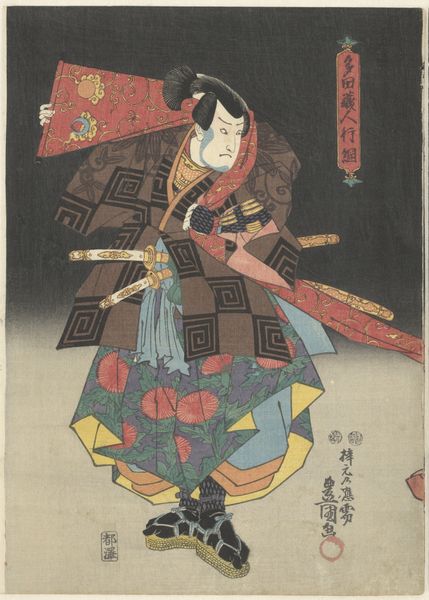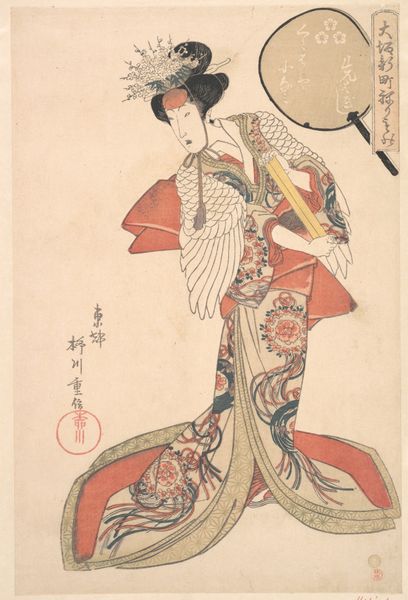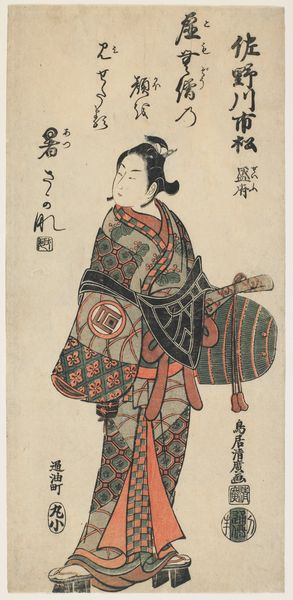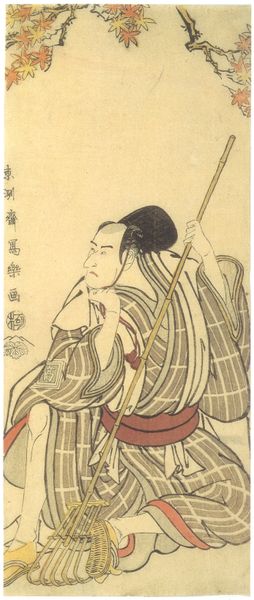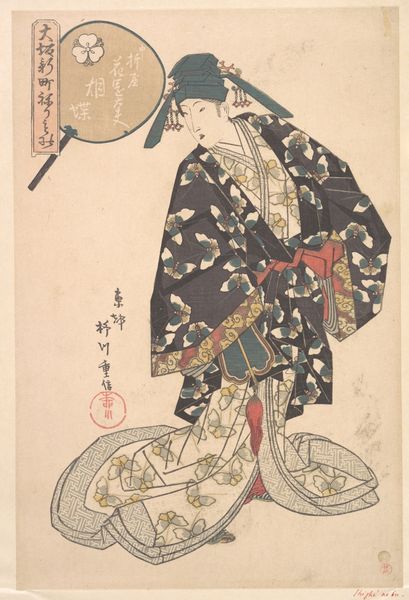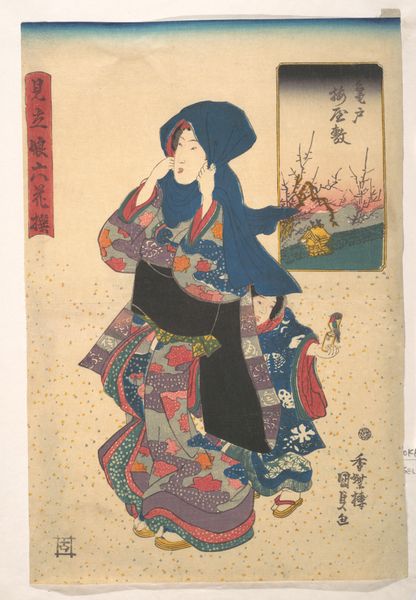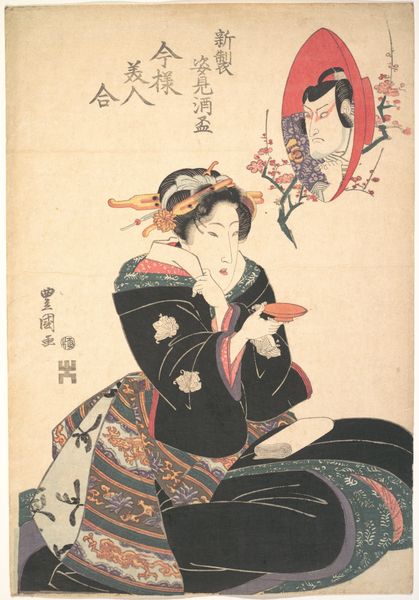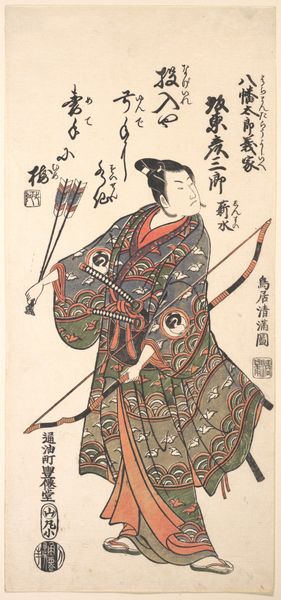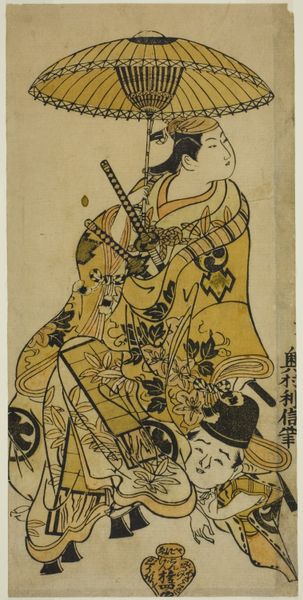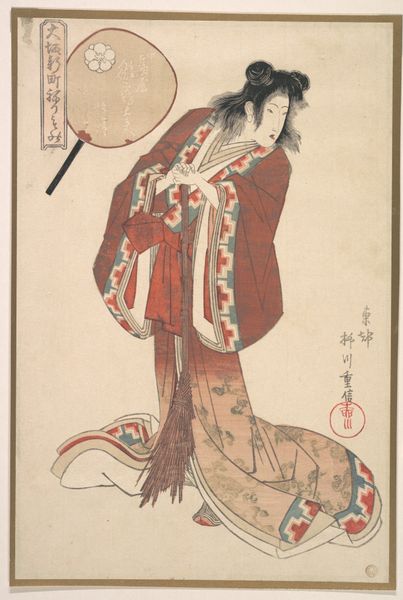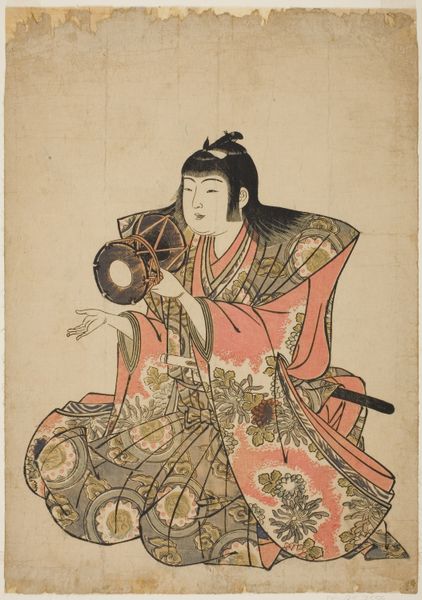
The Courtesan Emi of the Kyōki Brothel as Shizuka Gozen (Shizuka Kyōki Emi), from the series Costume Parade of the Shimanouchi District in Osaka (Naniwa Shimanouchi nerimono) 1836
0:00
0:00
print, woodblock-print
#
portrait
# print
#
asian-art
#
ukiyo-e
#
figuration
#
woodblock-print
Dimensions: Image: 14 7/8 × 10 1/8 in. (37.8 × 25.7 cm)
Copyright: Public Domain
Curator: Here we have Jukōdō Yoshikuni’s 1836 woodblock print, "The Courtesan Emi of the Kyōki Brothel as Shizuka Gozen," a dazzling work currently residing at the Metropolitan Museum of Art. Editor: Dazzling indeed. The colors just pop, don't they? That bright orange against the intricate patterns on the kimono… and is that a sword? There's a real tension between elegance and potential danger here. Curator: Exactly. What you’re sensing is intentional. This print, part of a series depicting courtesans in various roles, complicates traditional gender roles. Emi is performing as Shizuka Gozen, a famous historical female figure known for her dance and loyalty, but there is an important intersectional relationship between her occupation as a courtesan, and her costume that is referencing power and female autonomy. Editor: So, it’s a representation within a representation. I’m wondering about the labor involved in creating something like this. Each color would require a separate block, carefully carved and then precisely aligned for printing, an operation with meticulous craftmanship that blurs the lines between commodity and artifact. Curator: You've highlighted a crucial element, namely, production: the ukiyo-e tradition allowed for reproduction of these artworks, which helped expand access to these prints and images to many. The materials also speaks to the society’s values – notice the luxury implied by the detailed garments and the richness of the inks, mirroring the opulence associated with the courtesan's profession, while juxtaposing this with historical or performative figures to create compelling dialog within identity. Editor: The very paper seems carefully chosen – its texture and absorbency are part of the overall effect. I also can’t stop thinking about the economy involved in distributing these works to be admired and eventually collected across the world. Curator: Precisely! Considering the labor and the network through which this artwork travelled through to reach our audience today underscores your analysis of its means of production. It adds another layer of meaning to our contemporary perception of this print. Editor: This piece certainly gives us plenty to contemplate about craftsmanship and networks of consumption. Curator: Indeed. "The Courtesan Emi..." presents a multi-faceted picture of both individual representation and artistic and cultural forces at play in 19th century Osaka.
Comments
No comments
Be the first to comment and join the conversation on the ultimate creative platform.
